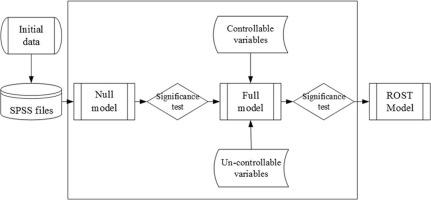Energy and Buildings ( IF 6.7 ) Pub Date : 2021-02-16 , DOI: 10.1016/j.enbuild.2021.110827 Taibing Wei , C.Y. Jim , Anqi Chen , Xiaojuan Li

|
Soil can absorb and retain solar heat to influence critically the thermal-energy performance of green roofs. Its modification to optimize warming effect in winter has received inadequate attention. Adopting the modeling approach, this study investigated key soil parameters to improve warming of the roof outer surface temperature (ROST) in winter using three experimental green-roof plots in subtropical south China. We assessed the effect of soil thickness and soil moisture as controllable predictor variables on ROST, and environmental factors of outdoor air temperature, relative humidity, horizontal solar radiation and wind speed as uncontrollable predictor variables. Adjusting the controllable variables, 14,784 sets of valid empirical data were collected to develop a Random Effects Model of ROST. Regression analysis indicated good fit between predicted and measured ROST and accurate model prediction, with an average absolute error of 1.12 °C and standard deviation of 1.53 °C. At 19.7% moisture content suitable for plant growth, the soil-thickness effect on ROST was evaluated. The model found average ROST of a 10-cm soil layer cooler than the bare roof to indicate poor warming performance, whereas a 20-cm layer warmed ROST notably. The findings can inform green-roof design by adjusting soil thickness and moisture to optimize winter thermal-energy performance.



























 京公网安备 11010802027423号
京公网安备 11010802027423号